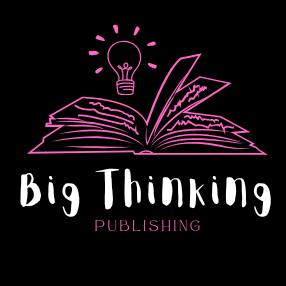Marketing feels gross and icky and no one likes it, but social media branding for indie authors is an essential part of your strategy if you want to sell any books.
Plus, it’s not hard.
SHOUTING INTO THE VOID is a fun strategy, and a little yelling can’t hurt. But spending all your time standing on a ladder with a microphone isn’t a great long-term plan.
If you want to sell books, and keep selling books, you need a strong personal brand that attracts your target audience.
And you want to make the branding something worth sticking around for, so the followers will still be there for the next book release.
Social media branding for authors is simple:
- Market yourself
That’s it. That’s the end of the list.
How to Market Yourself as an Author
The basics of social media branding for indie authors start at first appearances.
Don’t give your target audience any excuse to ignore you.
You will need:
- High-quality profile & banner images
- The same social handles on every platform
- Social media posts your audience can enjoy and engage with
Images
Creating high-quality profile and banner images is easy but essential. You don’t want blurry images of dead plants, or a picture of a fancy car.
This won’t sell books.
Profile images should be clear images of your face (smile, grimace, whatever). You can have a bold, solid colour/gradient background like my example here, but that’s not the only option.
Get someone to take a picture of you at a bookshop, in front of flowers in the garden, under a bridge like a troll… whatever!
Just so long as your face is the centre of the image – YOU are the selling point to the audience. Nothing else.
Both Adobe Express and Canva are free to use, and are perfect for this kind of thing.
Handles
This sounds irrelevant, but it’s important.
You want to be found easily on any social media site you are signed up to. The best way to do this is to use the same handle for everything.
Mine was easy, because no one else has my name: @tommyerozee – or @bigthinkingpublishing.
Now if I need to put my handle anywhere, I can just say it’s the same everywhere and be done with it.
Content Planning
When I’m writing, I’m a pantser. I don’t want a plan. Outlining doesn’t work for me because it kills my creative mood.
However, creating content for social media is totally different.
Sure, you might come up with something great on the spot today, but what about tomorrow, when you’ve got a headache and the coffee has run out?
Content planning for your author brand on social media doesn’t have to steal hours out of your day. Slice a short 10-30 minutes out of a writing session, once a week, and plan for the week ahead.
You can be boring like me, and just write a bunch of posts in a Google Doc, or you can get fancy with it on Notion, or something. The fancier it looks, the longer it’ll take, though!
But, you don’t need to be everywhere…
Focus on one social media platform first.
You’re going to get burnt out chasing clicks on Instagram, Threads, Facebook, TikTok, LinkedIn, YouTube, Bluesky, Mastodon, Twitter, Tumblr, MySpace, Bebo…
For Big Thinking Publishing, I started by focusing on Threads.
This is where the audience we want to attract spend their time, and it meant I (as our brand) could be a little unhinged on the internet.
With a solid foundation built on Threads, I can branch out naturally to Instagram and spend more time creating content there. Eventually, there will be branches out to as many platforms as possible, with a central “hub” on Threads.
This is a very basic strategy, but if you are low on budget and low on time, it can work wonders.
The Most Important Part of Your Social Media Strategy
Engagement. Engagement. Engagement.
This is why Threads is perfect, but the same rules generally apply to any platforms you are working on.
Be Human
Connecting with others in a meaningful way is the best way to not only grow on social media, but it’s also part of your author brand image.
Veronica Roth’s Threads account is a good example of this – so go look at what she does!
Take 10 minutes a day, if you can, to scroll through your feed and comment on other content. Your comments need to reflect who you are as a person and show the side of yourself your target audience will appreciate.
Be Yourself
Yes, there is an element of pretending going on online.
I, for example, am a massive introvert and I hate attention. But, I pretend to be confident with strangers on the internet.
However, my humour and my personality are true. I don’t make jokes I don’t like, and I certainly don’t give advice I wouldn’t take myself.
There’s a balance, and it will be different for everyone.
Unsatisfying Conclusion
Social media presence is only the start to growing an author brand online. It’s a massive part of your brand image, though, so invest time and effort into it.
These things take time. Be patient.
Other avenues that link to the social media strategy include creating a great author website and starting to build that all-important mailing list!
If you want to learn more about building mailing lists and SEO for author websites, sign up to our newsletter to be notified of our latest advice articles.


